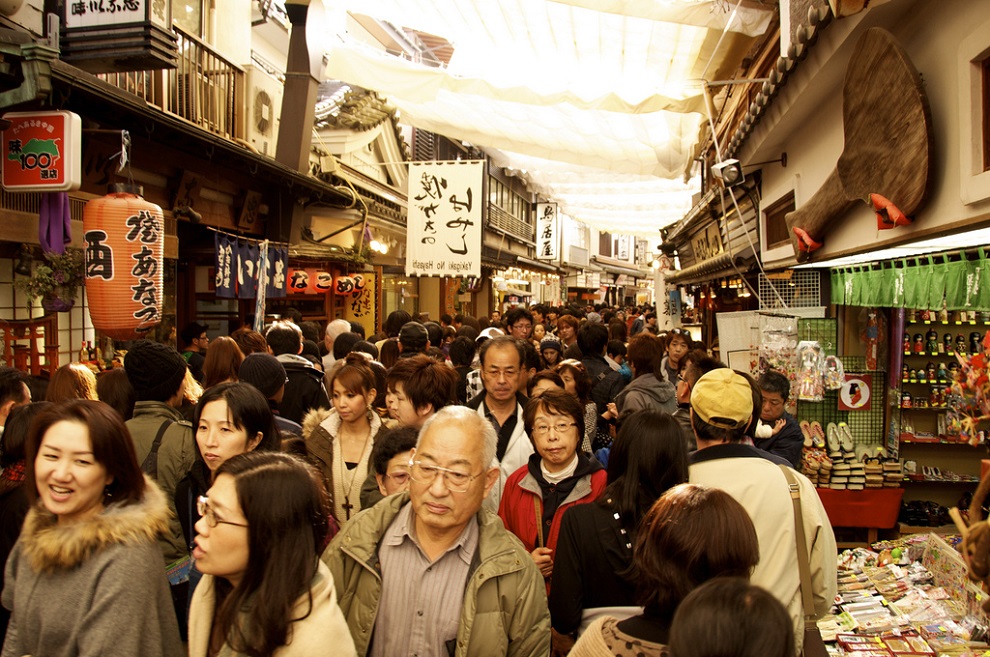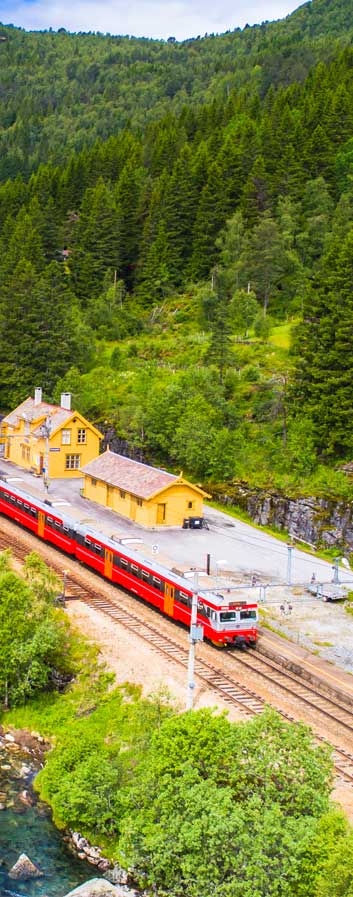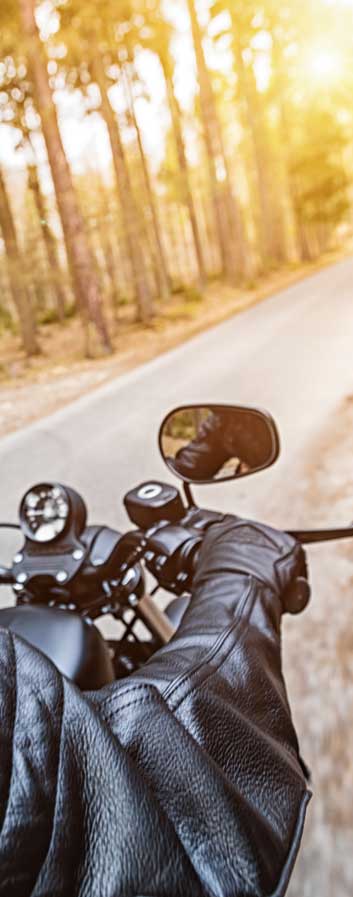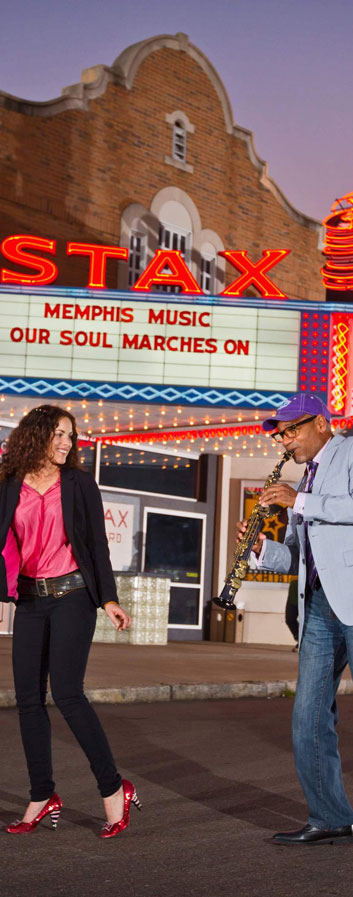Miyajima
It is the island where God dwells. There is a beauty born from that belief.
MiyajimaMiyajima is believed to be the island where God dwells. It is said that Itsukushima Shrine is built in the coast because the whole island is believed to be God's body and is sanctified. Itsukushima Shrine was built in the end of sixth century and modified to the present building with its solemn appearance by Kiyomori Taira, who came into power for the first time as a warrior in 1168. It is located in the sea and has a bold structure because the shape changes by the rising and falling tide. Also, the scenery combined with the vermillion-lacquered shrine building, green virgin forest on the back and the blue sea duly symbolizes the Japanese sense of beauty. The beautiful scenery never ceases to attract visitors.
Itsukushima Shrine is lit up at night. The shrine's red color shines brightly and has a solemn beauty. Also, the shrine's graceful scenery in the sacred atmosphere in the morning is magnificent and you cannot miss it. To watch these two impressions, we recommend that you stay in Miyajima island. There are many traditional Japanese inns called ryokan in Miyajima and you can choose either a Western style or Japanese style room.
There are ryokans where you can enjoy cuisine with local food or a spa as well as a room with no meals. There are also many other great points from which to choose a ryokan. Please enjoy a graceful time and have a good impression of the shrine.

MiyajimaIn Miyajima, there are many temples as well as Itsukushima Shrine. When you exit the shrine, you can see Daiganji Temple, which had craftsmen repair Itsukushima Shrine from the 13th century to the Meiji Restoration.
Among 4 Buddha statues, Yakushinyoraizazou was created by Kuukai (who is also known as Kouboudaishi, one of the most famous priests in Japanese history) in the 10th century.
In the hill on the left of Itsukushima Shrine, there are the Five-Storied Pagoda and Senjyokaku. The Five-Storied Pagoda built in 1407 is brilliant vermillion-colored and the atmosphere is really gorgeous. It was built with Zen Buddhism construction techniques introduced from China. Senjyokaku, which is adjacent to the pagoda, was founded by Hideyoshi Toyotomi, who unified Japan in the age of provincial wars to hold a memorial service for war dead in 1587. However, it is left unfinished due to Hideyoshi's death. The gold leaf is painted on the tiles of the building. If the work had been completed, the entire temple would be painted in magnificent gold leaf.
There is another sightseeing spot, Daishouin, which is located to the west of Itsukushima Shrine by a 10-minute walk. It is said that Kuukai (Kouboudaishi) created this temple in 806 after 100 days of ascetic training in Misen. Daishouin had conducted festival events of Itsukushima Shrine until the Meiji Restoration that changed all kinds of fields including politics, education, economy, and religion. Many Buddha statues and Mido (temple halls) are enshrined in the spacious premises and many great people had worshiped and visited here since ancient times. Also, there are an array of shrines and temples worth visiting such as Kiyomori Shrine and the treasure hall. If you visit these spots with a map, you can feel that Miyajima has been the object of worship for people.
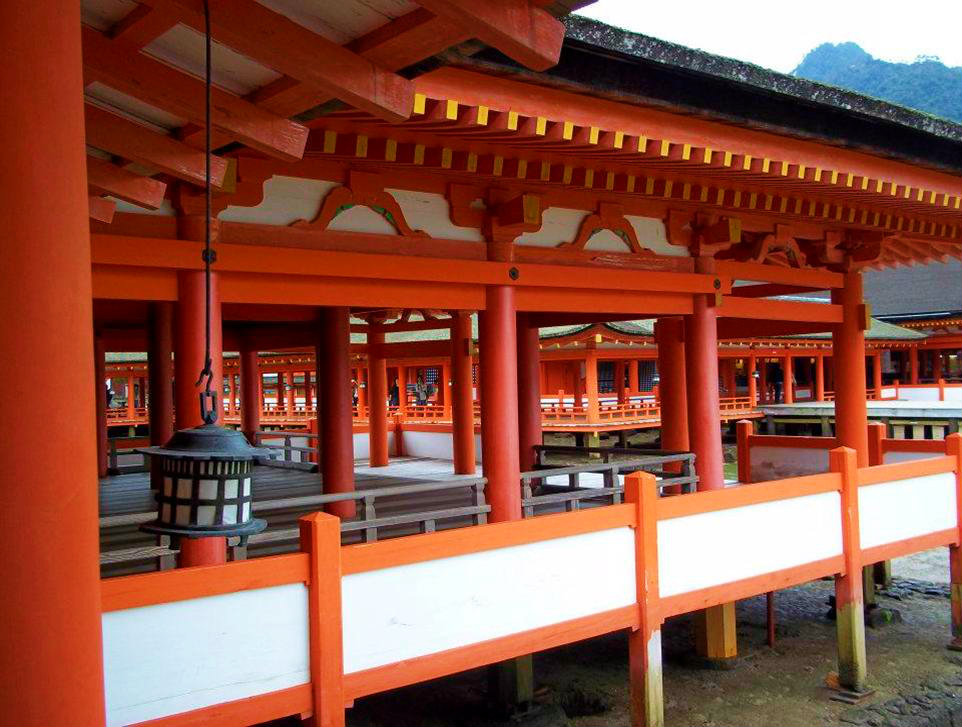
The vast extent of site is mostly covered by virgin forest where many kinds of plants live only in Miyajima, and 431.2 hectares of the site is included in the World Heritage Site.
You can go to the top of Mt. Misen (535 meter above sea level) by a cable car and on foot, and it is very good to climb while enjoying trekking on foot. On the top, there is a group of giant rocks and you can enjoy the view of the scenic Seto Inland Sea from the viewing platform.
In Miyajima, which is believed to be a divine island from ancient times and where rich nature is left undeveloped, you can enjoy the various seasonal impressions of beautiful scenery such as cherry blossoms in spring and red leaves in autumn.
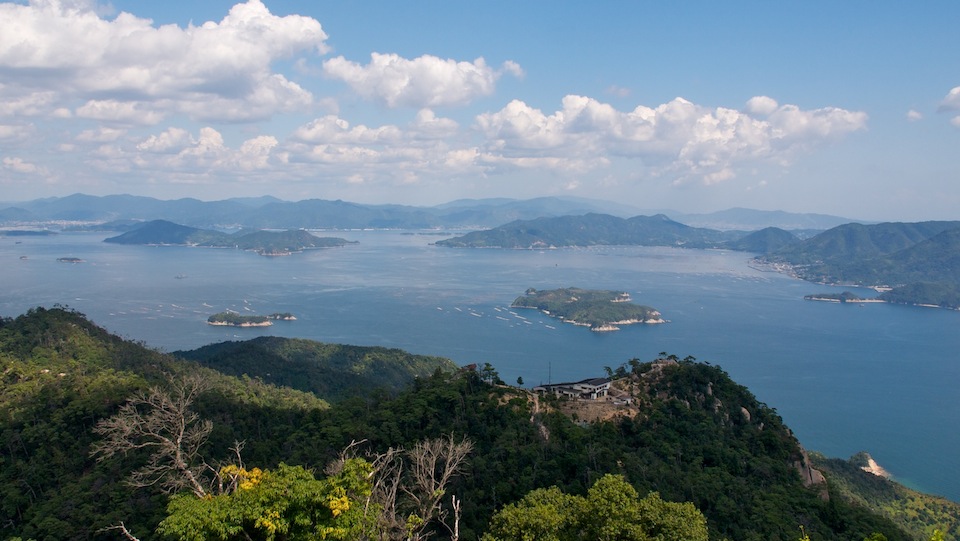
Omote-Sando is the main street from the port to Itsukushima Shrine and there are a lot of souvenir shops on both sides of the street. You can enjoy souvenir shopping for an artwork such as Shamoji, a rice scoop, well-known Momiji manju, a bun with a bean-jam filling made from maple leaves, and other crafts. It is unique pleasure in Miyajima to taste fresh Momiji manju in the storefront across the street. Also, there are many restaurants which offer well-known conger eel and grilled oysters. They satisfy visitors' appetites. Furthermore, there is Machiya (traditional townhouses) Street in the back street.
There are many ateliers, cafes and restaurants, and you can feel the atmosphere from ancient times. If you would like to enjoy Miyajima more proactively, a sea kayak is recommended. You can paddle all the way around Miyajima while seeing the Torii, the sacred Shinto gateway, and enjoying the landscape of Miyajima from the sea. Please enjoy yourself to your heart's content.
